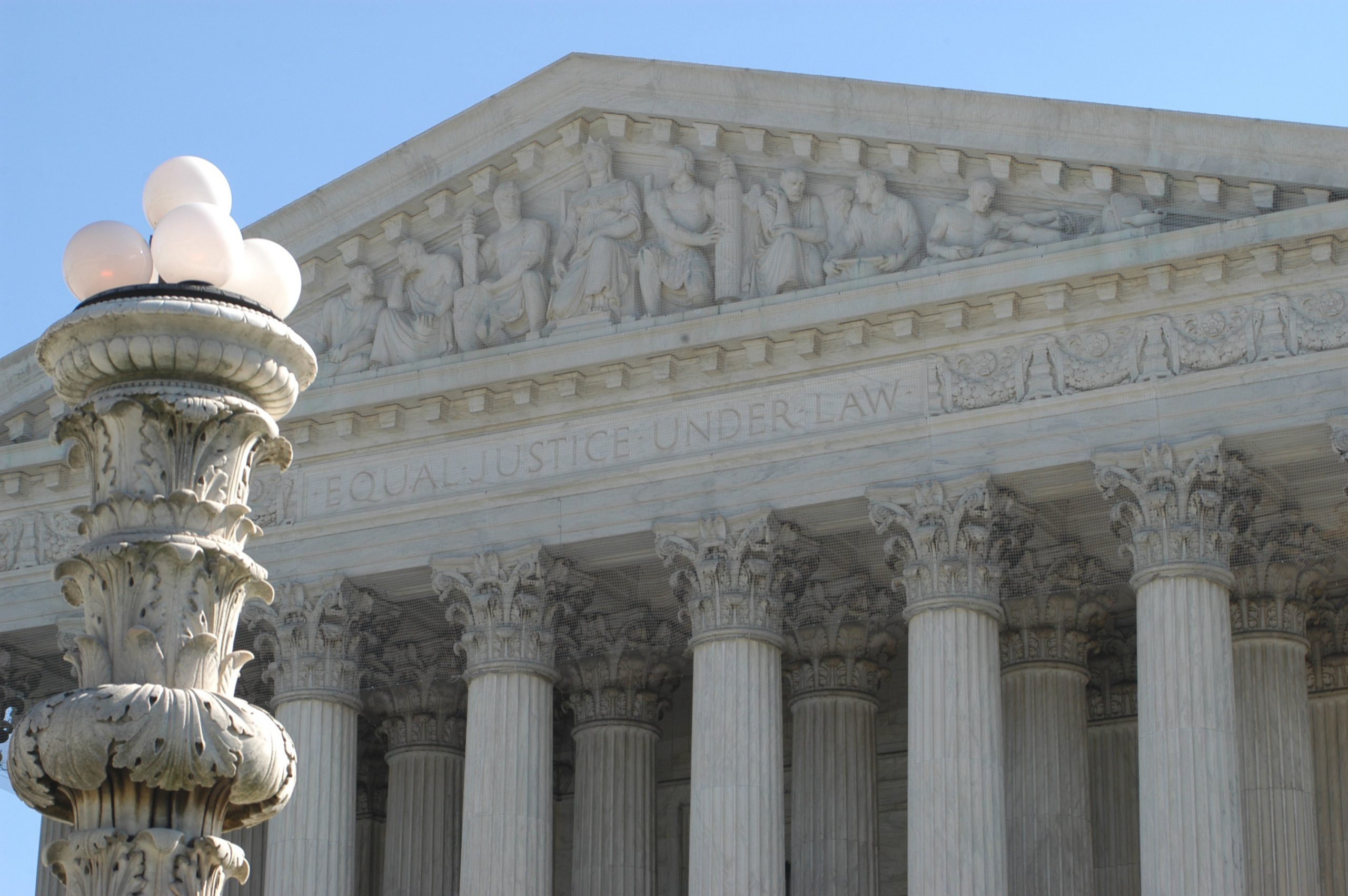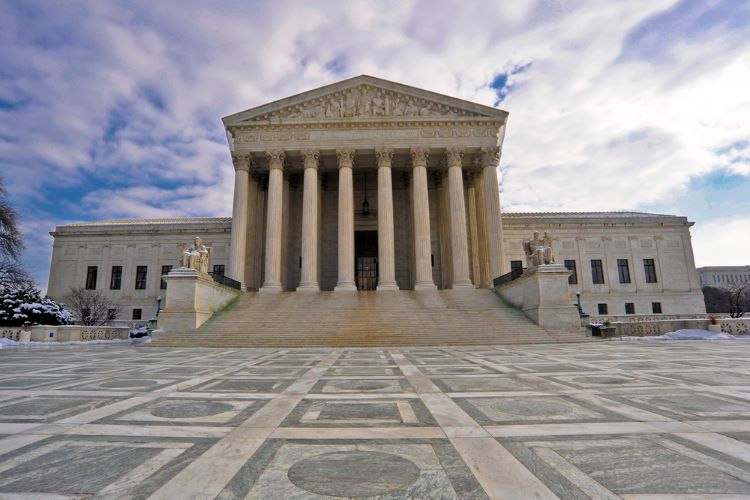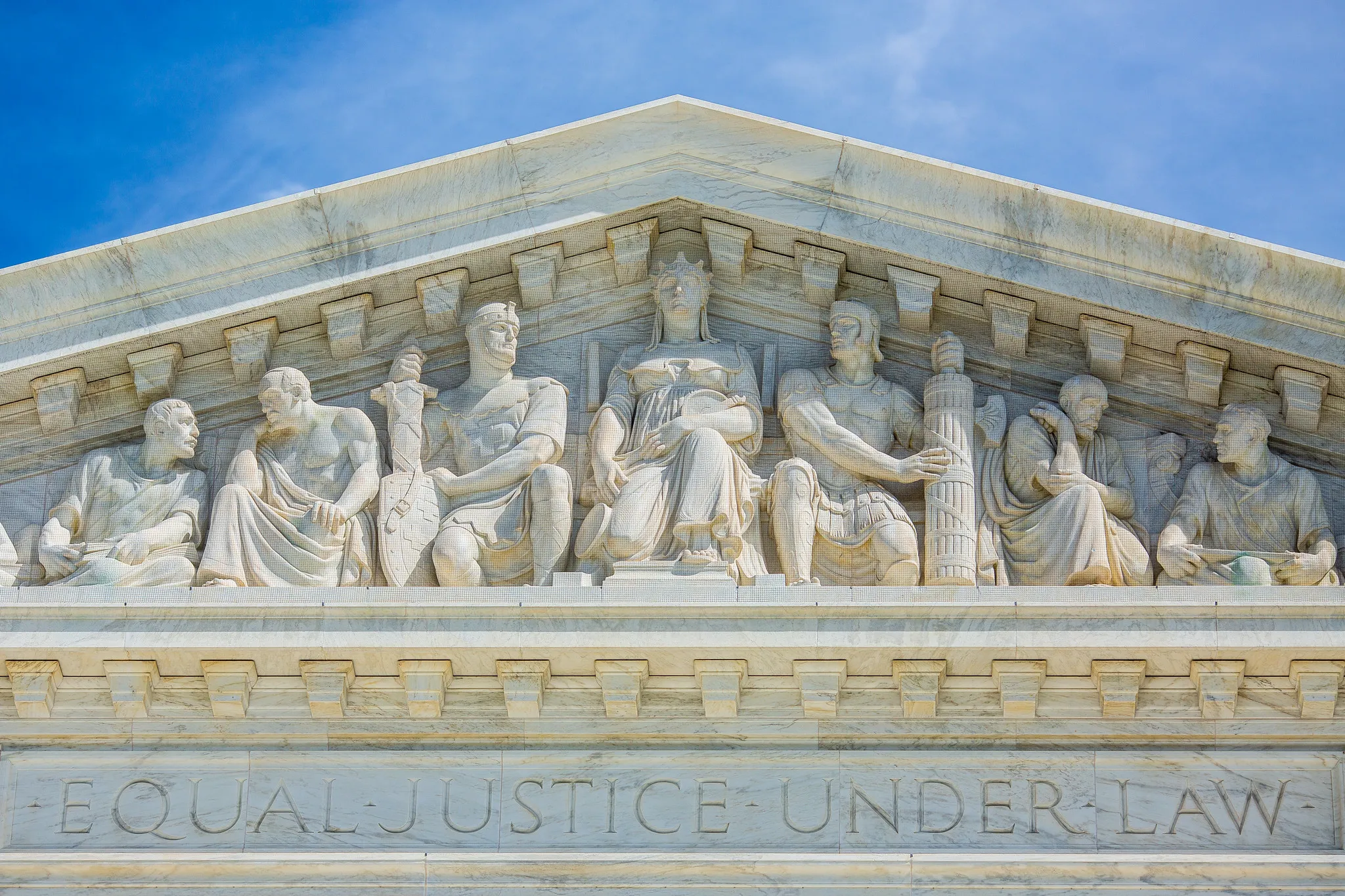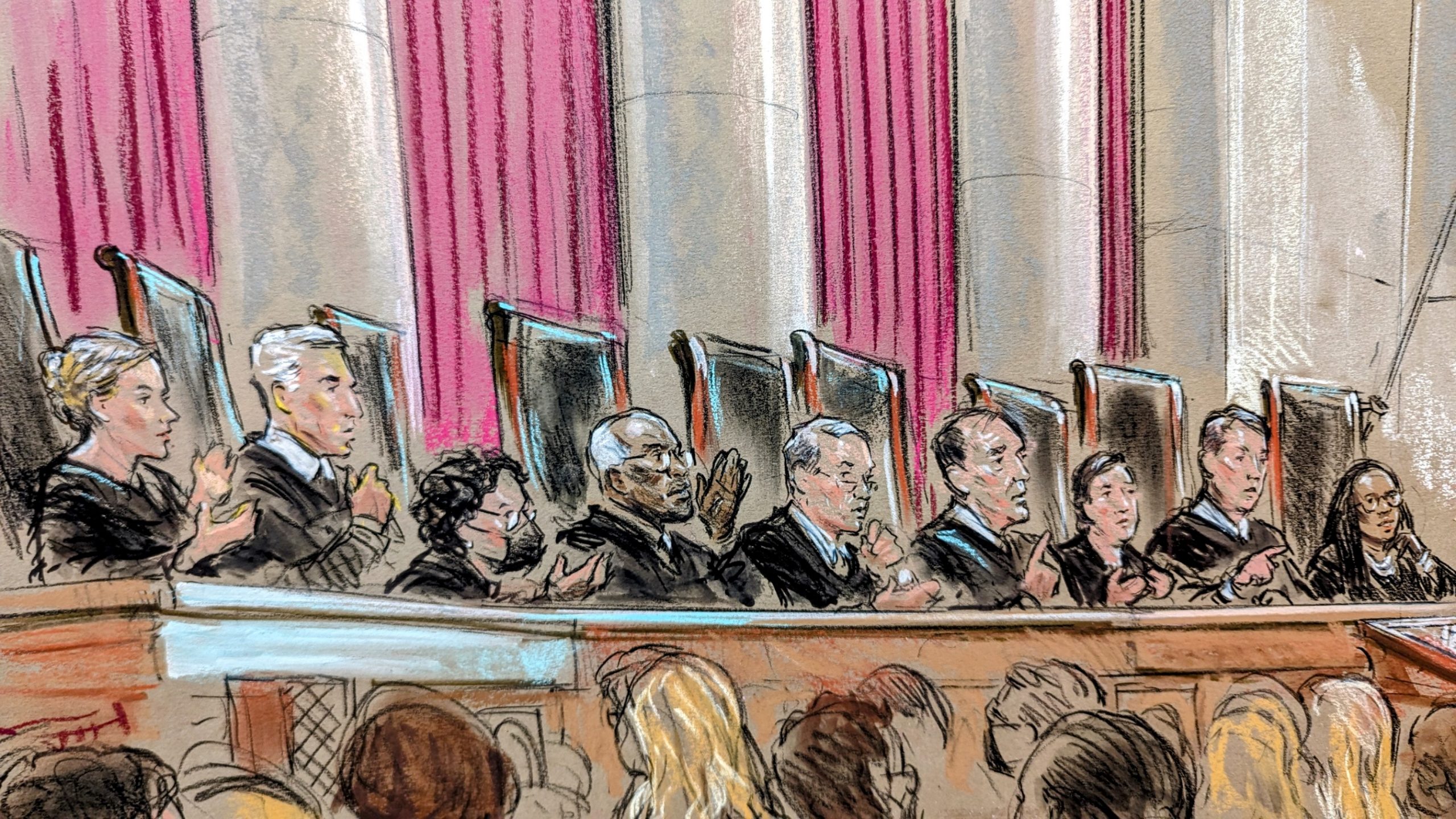Court split over California man’s takings clause dispute
ARGUMENT ANALYSIS
on Jan 9, 2024
at 9:52 pm
The justices heard oral argument in Sheetz v. County of El Dorado on Tuesday, Jan. 9. (Rena Schild via Shutterstock)
Despite a suggestion by Justice Neil Gorsuch that there was “radical agreement” in a California man’s challenge to the constitutionality of the “traffic impact mitigation” fee that he was required to pay when building his home, the justices appeared divided at oral argument on Tuesday. There may have been something approaching a consensus that (contrary to the lower court’s ruling) conditions on the exercise of property rights imposed by legislation can at least in theory be subject to heightened scrutiny. But other justices either disagreed with the premise of the state court’s ruling or questioned how such scrutiny should be applied, leaving a variety of open questions after nearly 90 minutes of debate.
George Sheetz, a resident of Placerville, Calif., applied in 2016 for a permit to build a manufactured home on a lot that he owns in the city. The County of El Dorado told him that to receive the permit, he would have to pay nearly $24,000 in traffic impact mitigation fees. After paying the fee and obtaining the permit, Sheetz went to state court to challenge the fee’s constitutionality. He argued that the fee violates the Fifth Amendment’s takings clause.
He urged the state court to apply a test outlined by the Supreme Court in two property rights cases, Nollan v. California Coastal Commission and Dolan v. City of Tigard, Oregon. These cases hold that if a government wants to require someone to give up property in exchange for a land-use permit, it must show that such a condition is closely related and roughly proportional to the effects of the proposed land use.
But the state courts declined to do so. They reasoned that the Nollan/Dolan test only applies to fees imposed on an individual basis, rather than fees – such as the traffic impact mitigation fee – authorized by legislation.
Representing Sheetz in the Supreme Court on Tuesday, lawyer Paul Beard told the justices that the fee that the county imposed on Sheetz “went beyond mitigation” and represented the “same improper leveraging” that prompted the Supreme Court to establish the Nollan/Dolan test. “Such review is needed,” Beard stressed, “to ensure that the government is not committing a taking in the guise of the police power to mitigate for land use impacts.”
Aileen McGrath, who represented El Dorado County, painted a very different picture. She characterized the fees charged to Sheetz as one levied by “countless local governments across the country” “to address the impacts of new development using a preidentified schedule.” Moreover, she emphasized, the fee is only intended to finance “improvements necessary to alleviate increased traffic from new development.” And subjecting fees like the one at issue in this case to the Nollan/Dolan test would, she cautioned, “have dire consequences for land use planning” by limiting the ability of local governments to pay for the infrastructure “necessary to serve new development.”
One major point of contention at oral argument was the precise holding of the state court and, as a result, the exact question before the justices.
Justice Clarence Thomas asked Beard whether the court needed to do anything more than decide “whether Nollan/Dolan scrutiny applies to” legislative enactments.
Beard told Thomas that it did not and emphasized that the county had “essentially conceded that primary point that there is no legislative generally applicable exception” to the Nollan/Dolan rule.
McGrath agreed that legislative enactments are not automatically exempt from the Nollan/Dolan rule. But, she added, the Nollan/Dolan rule does not apply to Sheetz’s case because the Supreme Court “has said before that certain kinds of legislation – property taxes, special assessments, user fees – are categorically outside of Nollan/Dolan.”
Gorsuch pushed back against McGrath’s characterization of the case, observing that whether the fees imposed on Sheetz were a tax or a user fee is “a really interesting question.” But the California Court of Appeals never considered those questions, Gorsuch continued, because it held only that “Nollan and Dolan simply doesn’t apply to legislative enactments of any kind.” “And I thought we had taken the case to address that question,” Gorsuch said. “And as the Chief Justice has pointed out, I think there’s radical agreement on that question today.”
In light of that agreement, Gorsuch posited, the next step would be to send the case back to the lower court for it to consider the open questions, such as whether the fee is a tax or a user fee.
But other justices questioned whether the Nollan/Dolan test applied at all to a case like Sheetz’s, which involved fees rather than the government’s efforts to take a property interest. Chief Justice John Roberts was the first to raise this point, noting that although Sheetz’s case “involves land,” the county had not sought to take “any particular property interest. They’re not taking any part of the land. They’re not taking an easement.” “I don’t think,” Roberts said, “there’s another case … where what’s involved is simply value as opposed to a concrete identifiable property interest.”
Justice Ketanji Brown Jackson also made a similar point. “What if,” she asked Beard, “I believe that Nollan and Dolanonly applies when the takings clause is implicated?” But, she suggested, there is nothing unconstitutional, standing alone, “about a county saying, if you want to build in this way, because of the impacts on the traffic or environment or whatever, you have to pay a fee.”
Justice Brett Kavanaugh, on the other hand, expressed concern that if the Nollan/Dolan test does not apply to impact fees like the one that Sheetz paid, it would create a loophole that would allow local governments “to impose exorbitant fees that are obviously being used to fund improvements in the other part of the county” that can’t be funded, for whatever reason, through tax increases. “Isn’t that,” he asked McGrath, “a core concern of our entire jurisprudence in this area” of the law?
Another key concern for some justices was how, even if the court were to rule for Sheetz, the Nollan/Dolan test would be applied to cases involving legislative enactments: Would it apply to the categories created by the legislative scheme, or would it apply instead on a case-by-case basis? Justice Elena Kagan suggested that the answer would instruct courts to “ask more generally about the proportionality or reasonableness … of the general legislative scheme.”
Beard countered that when the government appropriates property, it shouldn’t matter whether it does so through legislation or on an individual basis. In either scenario, he contended, the appropriation should “be subject to the same standard, which is to protect an individual property owner’s right against an uncompensated taking.”
Kagan was skeptical, and she pressed him to explain how courts should carry out such an evaluation. Because courts would have to undertake a complicated inquiry – considering, for example, the size of the property, “the distance from the highway, the number of residents, the exact amount of use that they’re going to do” – it would essentially rule out any generally applicable laws or fees going forward, she suggested.
In response to questions from Kavanaugh, McGrath later indicated that this was, from her point of view, the “core of what our dispute is here.” Although she continued to maintain that no property interest had been taken and that the Nollan/Dolan test would not apply to the fee levied on Sheetz, she conceded that “there has to be a connection between new development and the fees that the county charges” – a consideration similar to the nexus and rough proportionality requirements of the Nollan/Dolan test. But, she argued, the legislature should not have to “justify how it imposed those fees” on a case-by-case basis. Instead, she told Kavanaugh, “if any sort of heightened review is necessary here, it needs to be performed at a programmatic basis that looks at the categories that the legislature itself has drawn.”
A decision in the case is expected by summer.
This article was originally published at Howe on the Court.






